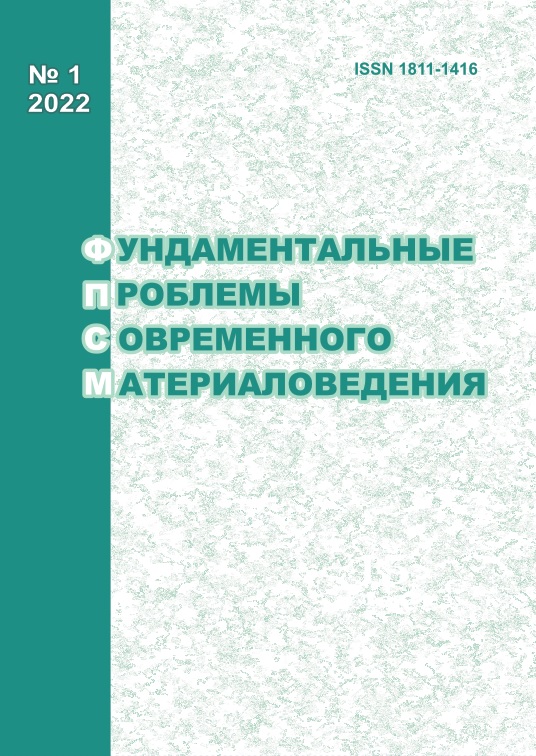ВЛИЯНИЕ ТЕМПЕРАТУРЫ ОТЖИГА НА ЭВОЛЮЦИЮ ДИСЛОКАЦИОННОЙ И ДОМЕННОЙ СТРУКТУРЫ СПЛАВА Pd3Fe В РАЗУПОРЯДОЧЕННОМ И УПОРЯДОЧЕННОМ СОСТОЯНИЯХ
10.25712/ASTU.1811-1416.2022.01.007
Ключевые слова:
сплав Pd3Fe, деформация, дислокационные субструктуры, сверхструктура L12, антифазные границы и доменыАннотация
В работе представлены исследования дислокационной и доменной структуры упорядоченного и разупорядоченного поликристаллического сплава Pd3Fe. Для изучения дефектной структуры использовался метод электронной дифракционной микроскопии. Упорядоченное состояние сплава достигалось при ступенчатом охлаждении образцов со скоростью 5 и 10 градусов в сутки при разных температурах отжига. Повышение температуры отжига и скорости охлаждения оказывает влияние на размеры доменов, которые образуются в сплаве. Типы дислокационных субструктур (ДСС) изменяются при увеличении степени деформации ε. В упорядоченном сплаве и в неупорядоченном при той же степени деформации типы дислокационной субструктуры несколько отличаются. Основным параметром, характеризующим упрочнение материала, является средняя скалярная плотность дислокаций. Плотность дислокаций при увеличении степени деформации и фиксированной температуре отжига увеличивается. При росте степени деформации происходит образование разориентировок в структуре. Разориентировки качественно идентифицируются возникновением на электронно-микроскопических снимках экстинкционных деформационных контуров. Количественным параметром разупорядоченной структуры является кривизна-кручение кристаллической решетки (χ). Установлено, что величина χ увеличивается с ростом степени деформации.











 Журнал «Фундаментальные проблемы современного материаловедения»
Журнал «Фундаментальные проблемы современного материаловедения» Контент доступен под лицензией
Контент доступен под лицензией 
